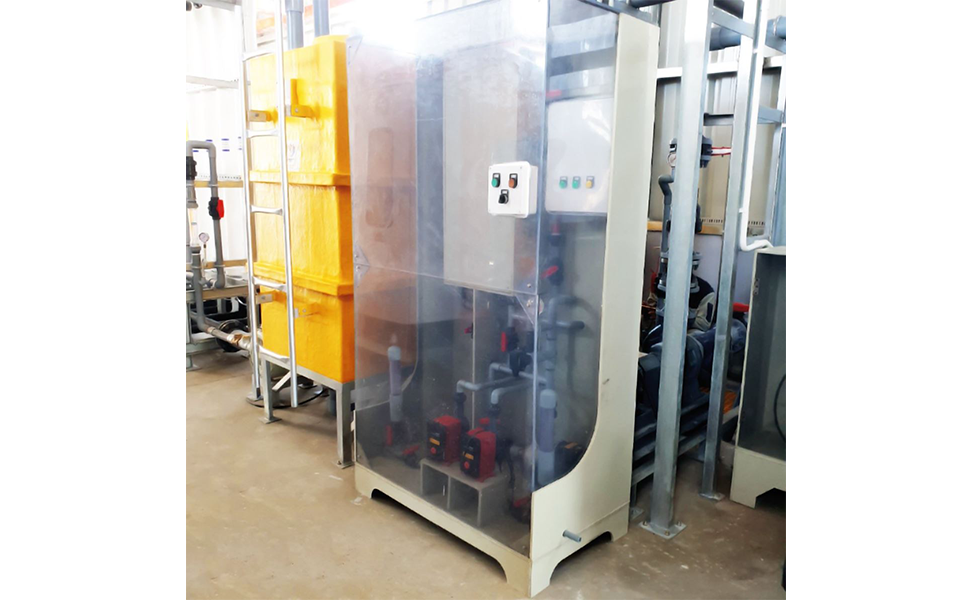CQOS Chlorine Dioxide Disinfection units
Chlorine Dioxide – Advantages:
- Powerful and highly effective oxidizer
- Not affected by pH because it is a dissolved gas
- Won’t react with many organic contaminants – including ammonia compounds
- Excellent biofilm removal -rapidly penetrates and oxidizes biofilms
- Can destroy odors caused by microorganisms and organics
- Does not form disinfection by-products such as THM’s and oxidized aromatics hlorine dioxide is selective, reacting with very few organic and no ammonia-based compounds
- The result is a much lower requirement for chlorine dioxide in the same chiller water
- Up to 50 times lower usage rate or “demand” than chlorine
- Unsurpassed Legionella control
- Elimination of taint/taste problems
Benefit area
– CQOS is used for bleaching of wood pulp and for the disinfection (called chlorination) of municipal drinking water.As a disinfectant it is effective even at low concentrations because of its unique qualities.
– CQOS is less corrosive than chlorine and superior for the control of Legionella bacteria.Chlorine dioxide is superior to some other secondary water disinfection methods in that chlorine dioxide is an EPA-registered biocide, is not negatively impacted by pH, does not lose efficacy over time (the bacteria will not grow resistant to it), and is not negatively impacted by silica and phosphates, which are commonly used potable water corrosion inhibitors.
It is more effective as a disinfectant than chlorine in most circumstances against waterborne pathogenic agents such as viruses,bacteria and protozoa – including the cysts of Giardia and the oocysts of Cryptosporidium.
– CQOS may be used as a fumigant treatment to “sanitize” fruits such as blueberries, raspberries, and strawberries that develop molds and yeast.
– CQOS may be used to disinfect poultry by spraying or immersing it after slaughtering.
– CQOS may be used for the disinfection of endoscopes, such as under the trade name Tristel.It is also available in a trio consisting of a preceding pre-clean with surfactant and a succeeding rinse with deionized water and a low-level antioxidant.
– CQOS may be used for control of zebra and quagga mussels in water intakes.
– CQOS was shown to be effective in bedbug eradication.
– CQOS useful for Aquaculture disinfection regard not related with pH ( CQOS disinfection effective 100% from pH 4-12 )






















